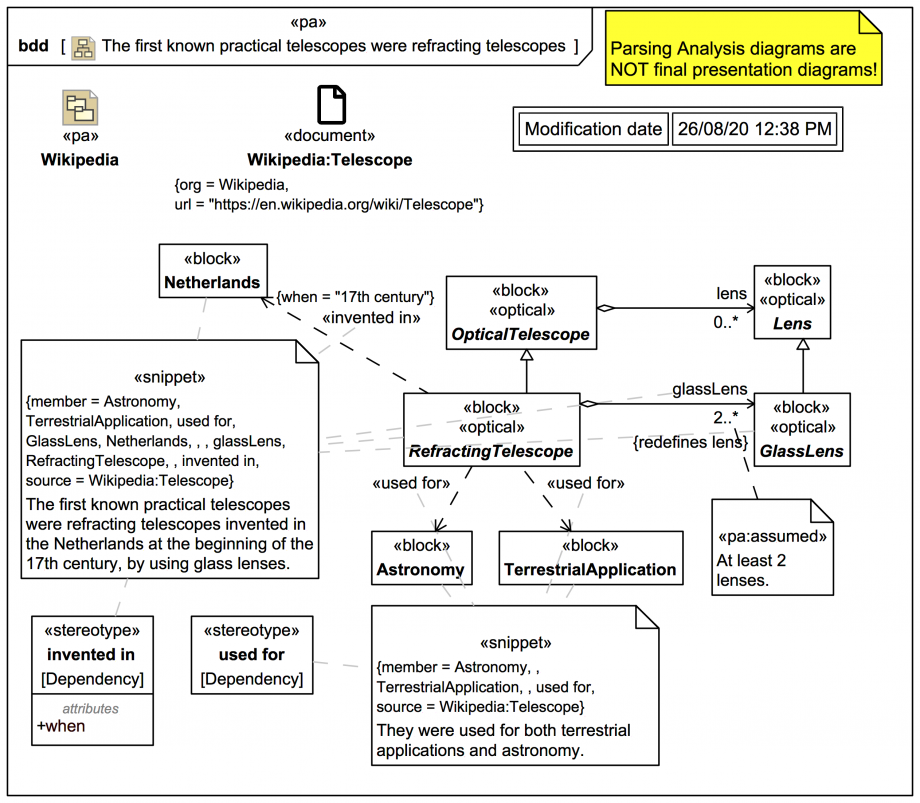Tags and keywords
Even though «pa» diagrams are not intended as final presentation diagrams, this tool tip can really help:
It seems that GlassLens is a particular typed of Lens, and the block RefractingTelescope (which extends OpticalTelescope) has redefined the Type and multiplicity of the reference property lens:Lens[0..*] to lens:GlassLens[2..*], where it has been assumed that a RefractingTelescope has at least 2 lenses, as indicated by the stereotype keyword «pa:assumed» on an editorial Comment. If we were treating refracting telescopes in more detail we'd have to justify this at some stage, but for now we'll note these two supporting snippets from separate Wikipedia pages:
Some SysML-fluent readers may ask why "only" AggregationKind 'shared' has been used here on lens:GlassLens[2..*], instead of making it a part property with AggregationKind 'composite'. The answer is that later we are going to have assemblies for containing parts like primary and secondary lenses and mirrors (including multi-element ones), so we don't want competing composition heirarchies.
I've also done it so that members of the SysML community who like to wage war on shared aggregation not having clear semantics have something to argue about at the pub (see also the linked specification references and separate tutorial slides about shared aggregation below).
Some other model elements such as Netherlands, Astronomy, and TerrestrialApplication have been elicited, with "semantic triple" Dependency keyword stereotypes «used for» and «invented in». We're not overly interested in representing the history of telescopes in this trail, but for the sake of illustration, the «invented in» stereotype has an attribute when so that one can assign a tagged value {when = "17th Century"}.
At regular intervals when using the Webel Parsing Analysis recipe for SysML® you should pause and create dedicated "focus" BDDs for main blocks, as shown next .


